1924 – 2013
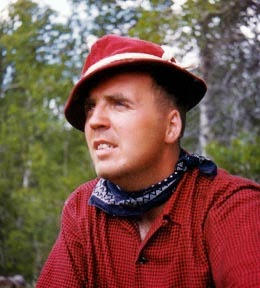
You may enjoy reading Philip’s detailed description of The Flora of the Wild Sky Wilderness on our website.
Remembering “Mr. Zalesky”
by Rick McGuire
Everett, Washington, was a far different place in the 1970′s than today. The “City of Smokestacks” still lived up to that name, along with a few less flattering versions. Weyerhaeuser’s “thermo-mechanical” and “kraft” mills anchored the southern and northern ends of the waterfront, with Scott Paper’s behemoth pulp and paper mills standing between. Various other saw and paper mills also operated, including Simpson Lee along the Snohomish river, source of the infamous eye-watering stench behind the town’s less flattering nicknames.
Everett was hardly a hotbed of conservation – quite the opposite. As I developed an interest in the fast-disappearing forests of the nearby Cascades, especially the uncut rainforests of the Boulder River, I sometimes got the feeling like I was the only person there with an interest in standing forests. The assumption always was that forests were for cutting. The trucks hauling three or four giant logs never stopped rolling, the smokestacks never stopped belching, and the forests surrounding the dramatic peaks to the east never stopped shrinking.
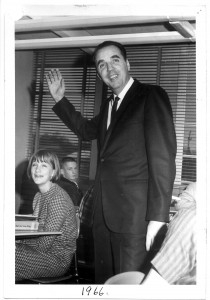
But I wasn’t quite the only tree hugger. The Everett Mountaineers had a one member conservation committee in the person of Henry Kral. It wasn’t long after I started talking to him about the Boulder River forests that he said “you need to meet Phil Zalesky.” This was none other than the “Mr. Zalesky” who taught at Cascade High School where I had attended not long before. Although unluckily I never had him as a teacher, I knew him by reputation. High school kids are not easily won over, but the name “Mr. Zalesky” was usually spoken with a degree of respect not accorded to many teachers.
As it turned out, Phil knew all about Boulder River, and many other places besides. A meeting was soon arranged in the Zalesky’s living room, where in 1978 Phil and Laura, Henry Kral, Marc Bardsley, Fay Ogilvy, John Huskinson, Karen Fant and myself formed the core of the Boulder River Protection Association.
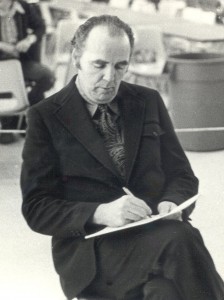
Courtesy Laura Zalesky
The odds seemed pretty daunting with all those trucks, mills and smokestacks, and the money behind them, arrayed against us. But Phil had been undeterred by far worse odds during the efforts to establish the Glacier Peak Wilderness and North Cascades National Park.
Everett itself began to change – more people realized the value of forests as the old growth began to run out. One thing led to another, and we were able to include the Boulder River in the 1984 Wilderness bill.
Phil’s voice was always one of encouragement tempered with realism. He never underestimated the magnitude of the tasks we faced, and never shrank back from doing the hard work to protect the best parts of the Cascades.
Decade after decade, the living room of the Zaleskys’ place on Del Campo Drive, named after one of the nearby Cascade peaks, was the nerve center of conservation in Snohomish County. With the birdfeeders outside the windows, and the quiet determination of Phil and Laura within, it was the birthplace of countless conservation efforts.
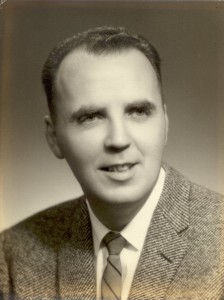
Laura’s work continues, in new surroundings. Phil is gone, but the results of his work live on, not only at Boulder River, Glacier Peak and Wild Sky, but every place where forests live on in the Cascades east of Everett and beyond.
Farewell to a Giant of Wilderness Preservation
By Julie Muhlstein, Herald columnist
Phil Zalesky’s legacy is huge and everlasting. With his passion for wilderness, he worked with others to keep the places he loved unspoiled for all time. And his career in the classroom shaped generations of Everett students.
“He never stopped teaching or educating,” said Laura Zalesky, his wife of 68 years. “He influenced so many people through his teaching. And when we would go out hiking with people, he would teach them all about the area.”
Philip Henry Zalesky died Oct. 18. He was 89.
A longtime resident of Everett’s Eastmont area, he lived in recent years with his wife in Mill Creek. He taught in the Everett district for more than 30 years. A Pullman native and U.S. Army veteran, he came to Everett High as an English teacher in 1952. In 1961, he was among the first faculty at Everett’s new Cascade High School, where he taught history and economics until retiring in 1984.
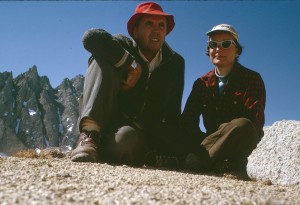
With their shared love of hiking and the Glacier Peak area’s magnificence, Phil and Laura Zalesky became effective preservation activists.
In 1957, they were among several co-founders of the North Cascades Conservation Council, with an aim of creating the Glacier Peak Wilderness. The group would go on to push for the creation, in 1968, of North Cascades National Park.
“Phil’s main thrust had always been to get the Glacier Peak Wilderness. That was sort of his baby,” said Marc Bardsley, of Snohomish, a past president of the North Cascades Conservation Council.
Bardsley is now secretary of the group, a position Phil Zalesky held for many years. “Phil was like a mentor to me,” Bardsley said.
It was through efforts of the conservation council that the Glacier Peak Wilderness, with the 10,541-foot peak as its crown jewel, was established in the early 1960s. The rugged 572,000-acre area covers parts of Snohomish, Skagit and Chelan counties.
According to a profile of Phil Zalesky written for the HistoryLink website by local historian Louise Lindgren, there was wrangling between conservation groups over whether a new national park would offer the wilderness the total protection prized by the couple.
In the end, Zalesky worked “as hard for the park as he had for the wilderness,” Lindgren wrote.
Laura Zalesky on Thursday recalled the role the late U.S. Sen. Henry M. “Scoop” Jackson, D-Wash., played in making North Cascades National Park a reality. The Zaleskys and others had long shared their knowledge of the land, and their fears about logging and mining.
“Senator Jackson finally got on the boat,” Laura Zalesky said. “His famous remark was, ‘You get the parade going and I’ll lead it.’”
Because so much of the wilderness area was accessible only to hikers, Zalesky became a pitchman for preservation. Herald archives show that in 1963 he spoke to the Everett Kiwanis Club on the topic of “A National Park in the Northern Cascades.”
“People who really knew the land well from exploring the back country and seeing it knew that all these great places, of national park caliber, needed to be protected. But the public needed to be educated about those places,” said Karl Forsgaard, now president of the North Cascades Conservation Council.
Forsgaard said the council’s 11-year push for the national park was followed by long battles to include “so much that was left out of the park.” Eventually, that work preserved the Mount Baker Wilderness, the Henry M. Jackson Wilderness and the Wild Sky Wilderness. “All that continued vigilance took a long-term commitment,” Forsgaard said.
The Zaleskys were part of that. The Cascade Land Conservancy honored the couple with its first Phil and Laura Zalesky Lifetime Achievement Award, an annual prize that now recognizes others working to save open space.
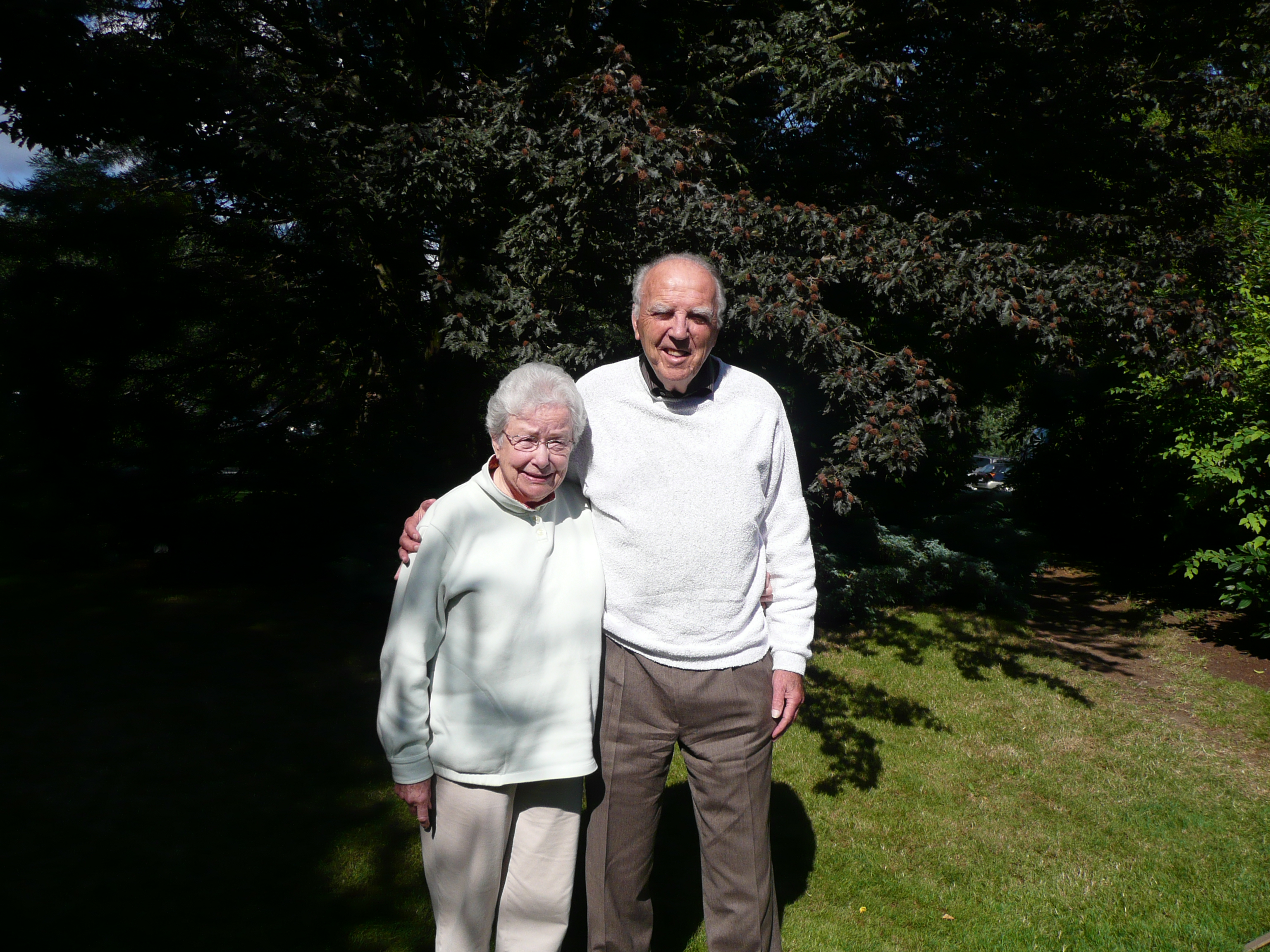
Zalesky died less than two weeks after the Oct. 6 death of 94-year-old Patrick Goldsworthy, of Seattle. Another co-founder of the North Cascades Conservation Council, Goldsworthy was a University of Washington professor who also helped start the Sierra Club’s Northwest chapter.
While Zalesky is known as a giant in wilderness preservation, one former student recalls him as a remarkable teacher. “We all have a handful of teachers we remember,” said Everett Mayor Ray Stephanson. “Mr. Zalesky was one of those. I learned so much about business and economics from him.”
Stephanson said one class project at Cascade High had students learning about companies and buying one share of stock. “The year I had him, I did all this research on Raytheon, a company doing electronic work and radar. I convinced the class to buy this stock. Over the course of the quarter, we watched the stock and read about it,” he said. “He was just one of those standout teachers.”
Laura Zalesky was also a teacher, and before that worked for Sno-Isle Libraries in the bookmobile. After retirement, the Zaleskys traveled and hiked in Europe and New Zealand. Both were involved in the Pilchuck Audubon Society, and Phil Zalesky wrote a guidebook called “Birding in Snohomish County.”
David Cameron, who taught history at Cascade High School for 30 years, was both a colleague and former student of Zalesky’s. As an Everett High sophomore, Cameron climbed Whitehorse Mountain with his English teacher — Zalesky — and Goldsworthy. “He had us reading mountaineering and outdoors books,” said Cameron, who is Lindgren’s husband.
Today, conservation groups are still working to preserve areas around North Cascades National Park through a campaign called the American Alps Legacy Project.
Zalesky’s own legacy stands tall, for all time.
“It took that advocacy work of people like Phil Zalesky, who knew that land, so more people would come to understand,” Forsgaard said.
Julie Muhlstein: 425-339-3460, jmuhlstein@heraldnet.com.
From Historylink.org:
“Phil and Laura Zalesky began lives in 1924 that included early poverty, but became enriched through their marriage in 1945 and intertwined with some of the most important Pacific Northwest environmental efforts of the twentieth century: creation of North Cascades National Park, defending Olympic National Park, and protecting the fragile wetlands of Snohomish County…
Lifetime Achievements
“The couple’s skills were complementary. Phil enjoyed speaking. Laura did not. She was extremely well organized, and Phil depended on her for that. Phil was not good at delegating; Laura was, and both realized that
“Well into the second half of their ninth decades, Phil and Laura still worked for the environment as members of NCCC, OPA, and Pilchuck Audubon, through which they endowed a grant program for teachers who offer their classes natural history lessons. A relatively new initiative, the American Alps Legacy Project, dominated their efforts in 2010, with its goal of adding areas left out of the protection of either wilderness or park designations in the North Cascades.
“The Zaleskys were honored as “Legacies of the Wilderness” by the Washington Trails Association, and a “Phil and Laura Zalesky Lifetime Achievement Award” is now given annually by the Cascade Land Conservancy. By the time Phil Zalesky died on October 18, 2013, the couple had given an extraordinary legacy of environmental protection for the benefit of future generations.”
Read more… http://www.historylink.org/index.cfm?displaypage=output.cfm&file_id=9368
Philip Zalesky: Another Conservation Leader Passes
Posted on October 22, 2013 | By Joel Connelly
The conservation movement in Washington has lost another of its creators. Philip Zalesky, 89, a longtime Mountaineers activist and co-founder of the North Cascades Conservation Council (N3C), died Friday in Everett.
The death of Zalesky follows by less than two weeks the passing of Dr. Patrick Goldsworthy, another of the small group that established the N3C in 1957 and used hiking trips, exhibition format picture books and trail guides to make friends and advocates for mountains known as the American Alps.
Phil and Laura Zalesky, she another co-founder, were at the focal point of seminal conservation battles of the 1960s, 1970s and 1980s. He taught at Everett and later Cascade High School. She became a leader in the League of Women Voters and later the Pilchuck Audubon Society.
The Zaleskys lived in what was a classic mill town. The key voices on conservation in Congress belonged to two sons of Snohomish County: Sen. Henry Jackson, D-Wash., chaired the Senate Interior Committee while Rep. Lloyd Meeds, D-Wash., was a reformist voice on the House Interior Committee.
The Zaleskys learned conservation politics as members of Olympic Park Associates. Phil Zalesky and Carsten Lien took pictures of logging taking place within boundaries of Olympic National Park, which forced Park Service Director Conrad Wirth to halt the logging. They also beat back proposals, sometimes made with Jackson testing the winds, to excise rain forests from the national park.
With N3C, and backing from the national Sierra Club, the Zaleskys fought to create a Glacier Peak Wilderness and later the North Cascades National Park. Jackson and Meeds posed a political challenge to the state’s early greens: Show us the support that will make us do this. Both expected gratitude. The conservationists, of course, always wanted more.
Timber industry opposition was adamant. Rural sentiment was such that Darrington residents erected a “Welcome Kennicott Copper” sign across the entrance to the Suiattle River road, when the company proposed locating a half-mile-wide open pit copper mine in the heart of the Glacier Peak Wilderness. Lloyd Meeds kept, framed in his office, a letter from his parents vociferously opposing a wilderness he was in the process of creating.
The leaders of N3C were a study in contrasts. “101 Hikes” guidebook author Harvey Manning was ornery and a bit confrontational. Pat Goldsworthy was gentle but persistent and persuasive. The Zaleskys were affable, friendly, and joiners. He taught for 36 years, she for 19 years. He was a longtime chairman of the Snohomish County Democratic Party.
In retirement, the couple canoed in the Arctic and explored Canada’s Kluane National Park, home to Mt. Logan the second highest peak in North America.
Phil Zalesky and Pat Goldsworthy were each to serve 56 years on the board of the North Cascades Conservation Council, arguably the most unyielding of the region’s green groups. The N3C never allowed membership to elect its board, initially out of fear that the timber industry would pack its membership.
Laura Zalesky and Polly Dyer are now the last surviving founders of N3C.
The Cascade Land Conservancy, now Forterra, honored the Zaleskys by establishing a Philip and Laura Zalesky Lifetime Achievement Award.

